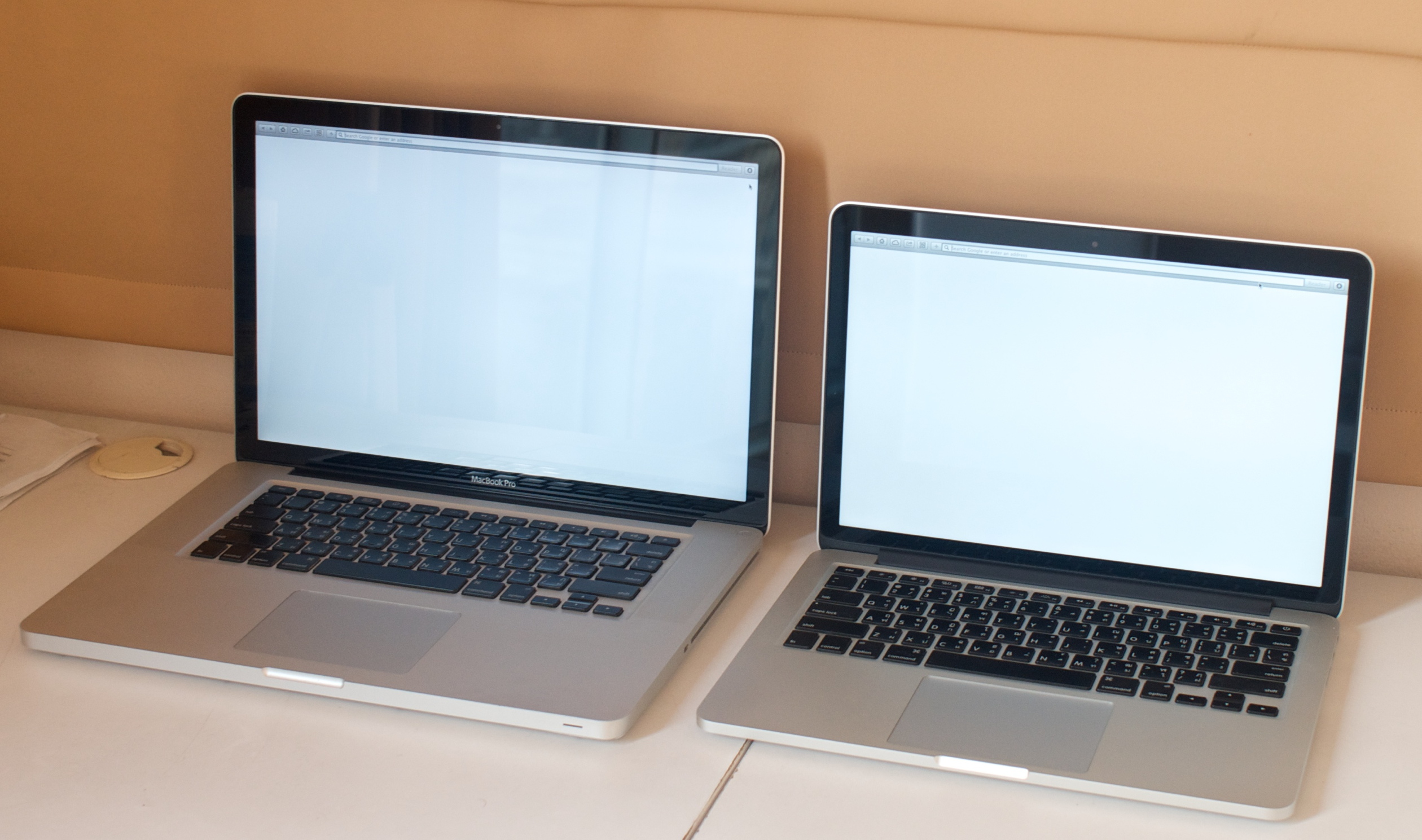Apple Notebooks - Then and Now - Bangkok Post, Life (Amended)

AMITIAE - Wednesday 12 March 2014
|
Apple Notebooks - Then and Now - Bangkok Post, Life (Amended) |
 |
|
|
By Graham K. Rogers
Apple computers are split between desktops and portable devices. The desktop computers include the under-rated Mac mini, the iMac and the new Mac Pro which is just arriving in Bangkok. I saw one recently in Siam Discovery Center. Although I have an older iMac, my preference is for portable devices. I include my iPhone and iPad as I am able to do a surprising amount of work on these when away from home.

MacBook Pro Computers - 15" and 13" with Retina display
I still have a PowerBook 520c from 1995 in my office. I was surprised last week when, after about 10 years, it started up first time (running System 7.6.1), although deterioration of the 9.5" screen means it is almost unreadable.
With the low weight and the ability to turn the screen on instantly, it was easy to see why it became popular. That instant-on was helped in a big way by the use of a solid state drive (SSD). The main drawbacks for me are the smaller disk size and the lower processor speed. I want a computer that I can use at home, at the office and travel with: it has to be my main computer, not an extra. Many get round the hard disk space problem with external disks. These are small enough and cheap enough these days. I have a couple of these that were only a couple of thousand baht each. I have one small enough to fit right inside a shirt pocket.
Imation 1TB disk and Imation 500 GB disk - Both shirt-pocket sized
While the older one sometimes balked at an SD card with a couple of hundred RAW pictures from my Nikon D7000, the new computer doesn't even start to get warm. That older MacBook Pro often had both fans spinning up to 6,000 rpm, which even an increase to the maximum of 8 GB of RAM failed to ease. The latest McBook Pro has a newer generation of processor from Intel that is designed specifically for notebook computers. It runs cooler and battery life is markedly better. I can teach for a morning, running video via a projector and still have enough battery charge left for most of the afternoon. There are losses with the new Macs. I can no longer use the infra-red remote control and there is (oddly) no power light. Also gone are the optical disk drive and Ethernet, signalling Apple's focus on Wi-Fi connection: enhanced with the latest (802.11ac) standard. That will mean much faster data transfers, so synchronising data between devices (Mac, iPhone, iPad, AppleTV) will be almost instantaneous.
Graham K. Rogers teaches at the Faculty of Engineering, Mahidol University in Thailand where he is also Assistant Dean. He wrote in the Bangkok Post, Database supplement on IT subjects. For the last seven years of Database he wrote a column on Apple and Macs. |
|

For further information, e-mail to

|

|